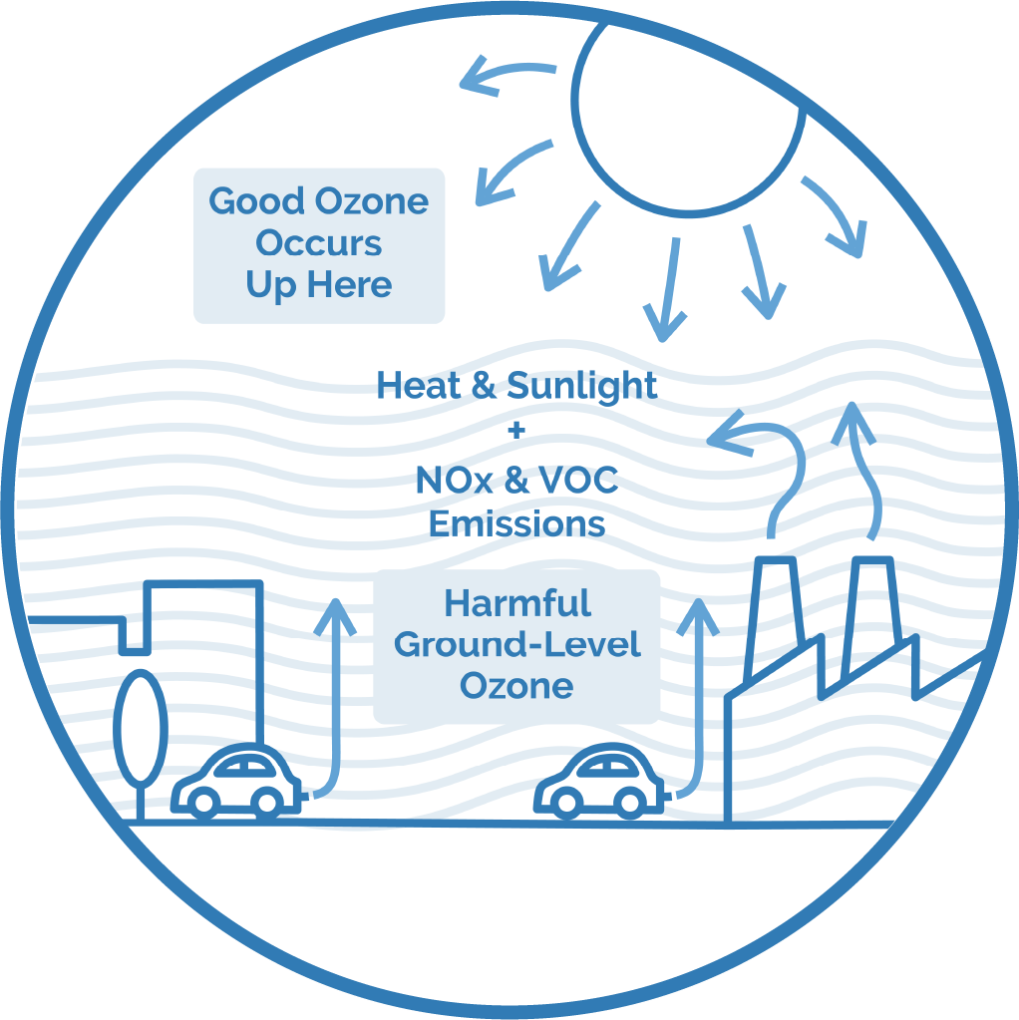Let’s Clear the Air
Just because you can’t see smog around the Omaha metro area, doesn’t mean we have clean air. In fact, our air can be quite unhealthy to breathe when ozone levels are high.

What is Ozone?
Most oxygen in the air consists of two joined oxygen atoms, O2. This is the oxygen we breathe. Add another oxygen atom, O3, and you have ozone — and odorless, colorless gas.
Here’s where it gets tricky.
There are two kinds of ozone: the good kind, in the ozone layer high above the Earth that protects us from the sun’s ultraviolet rays; and the bad kind: ground-level ozone, a health hazard also known as ozone pollution.
Ozone’s Effect on Our Health
Even low levels of ground-level ozone can irritate airways and inflame the lining of the lungs. People who spend the most time outdoors during the summer increase their exposure — including children and anyone who works outside. It’s even dangerous for plants and animals to be around these harmful pollutants.
Ground-level ozone is especially harmful to people with asthma, the elderly and the very young. Exposure to ozone increases the risk of asthma attacks and hospitalization, aggravates emphysema and bronchitis and increases the chance of respiratory infection, even in healthy people.
Guide to Air Quality Index Categories
Thankfully, the Air Quality Index (AQI) tells us how clean or polluted the air is on any given day. The higher the AQI value, the greater the level of air pollution and the greater the health risk.
When temperatures are on the rise, so is ground-level ozone. Stay indoors during the heat of the day, and check the daily forecast where you live:

Ozone’s Effect on the Environment
Ground-level ozone can have an impact on all living things, including crop production and forest growth. That’s because it interferes with the plant’s ability to produce and store food. This compromises the growth and reproduction of the plant.
But it doesn’t stop there. Weakened vegetation is more susceptible to disease, pests and environmental stresses like heat and drought.
In an area like ours, ground-level ozone can reduce agricultural yields. Sensitive plants include soybeans and alfalfa. And because ground-level ozone can be carried in the wind, even areas surrounding the metro can be affected.
Studies have shown that trees are also at risk — especially fast-growing deciduous trees that are found in our area. During periods of high heat and high ground-level ozone, it can damage entire ecosystems or forests.
It’s a bigger problem than you think.
There’s increasing evidence that we are more affected by ozone pollution than previously thought. As a result, the U.S. EPA lowered the acceptable level of ozone on October 1, 2015.
On an average hot day, the Omaha-Council Bluffs metro is close to exceeding the new level. “Non-attainment” means that there is too much ground-level ozone in our air and the area is over the EPA limit.
